Key Takeaways
- Choose a Shopify-native email tool to gain an edge with real-time product data, checkout triggers, and accurate revenue tracking.
- Set up core flows first—abandoned checkout, welcome, post-purchase, and win-back—then add segments based on orders, tags, and behavior.
- Use clean templates with product blocks and clear consent to send helpful messages that respect customers and build trust over time.
- Start fast with a tool that fits your store size and budget, then test subject lines, send times, and SMS nudges to find quick wins.
If you’re running a Shopify store, you’re probably looking for email marketing tools that support the specifics of Shopify functionality.
Native features like product feeds, checkout triggers, synced discounts, and dynamic segments make a big difference.
The best email marketing tools for Shopify use the abovementioned data to send more personalized messages that convert shoppers and bring them back.
Below, we’ll compare some of the top platforms based on automations, templates, segmentation, SMS, and pricing clarity. If you’re deciding between apps, we expect that you’ll leave knowing which ones match your goals, tech comfort level, and store size.
What to Look For in a Shopify Email Tool
Not all email tools play well with Shopify. Look for ones that natively integrate. It means tools that pull in customer data, product info, discount codes, and checkout events without workarounds that add unnecessary space for error.
Some of the best email marketing apps for Shopify usually offer prebuilt automations like abandoned cart, browse recovery, post-purchase, and win-backs. Segmenting should also go beyond the basics. Consider the tools that offer order history, tags, predicted spend, and behavior-based functionality.
Ideally, templates should also feel on-brand, with product blocks and dynamic recommendations. Reporting is best when it’s linked with orders directly, not just clicks. Bonus if it includes SMS and push to round out your flows.
Arguably the most important part: watch for pricing that scales with contacts or sends. If you’re planning to scale significantly, decide if the pricing model of the email marketing tool is sustainable in the long run and won’t have a price hike that’s just too steep to settle.
The 6 Best Shopify Email Marketing Tools
Omnisend
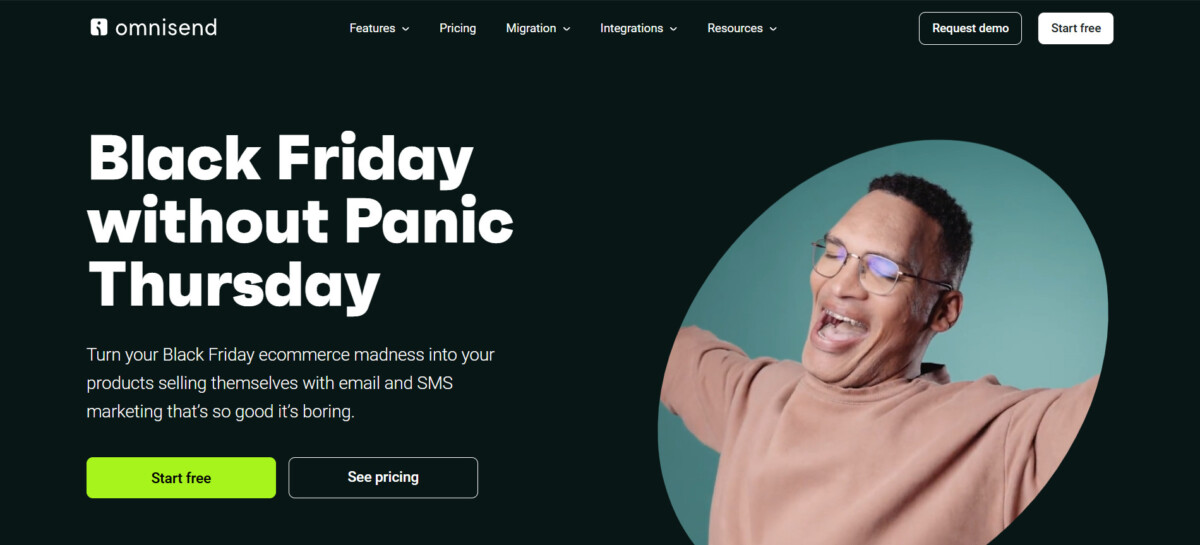
Omnisend is built for ecommerce from the ground up. It gives Shopify stores a complete toolkit for email and SMS under one roof, with a one-click integration, a wide selection of automations, and a fast setup.
Standout Features
Out of the box, you get prebuilt flows for abandoned cart, checkout, and browse recovery. You can insert products directly into emails using a product picker, set up behavior-based splits, and build workflows that combine email and SMS effortlessly.
There’s even an option for a campaign booster that resends campaigns automatically either to the recipients that haven’t opened the message, or haven’t clicked a button inside the email.
Forms and pop-ups are designed specifically to work inside your Shopify storefront, so collecting subscribers is as easy as it can get.
Pricing
Pricing is based on contact count, and SMS usage is billed separately. A free tier is available to test the waters and holds an unlimited number of contacts, though you can only reach up to 250 contacts per month with email.
Best For
It’s best for Shopify stores that want fast time-to-value with prebuilt omnichannel flows and grow into more advanced use cases without switching tools
Sendlane

Sendlane is a good pick for brands focused on long-term DTC growth. It’s flexible, powerful, and designed with ecommerce behaviors in mind.
Standout Features
Its automation engine connects tightly with Shopify events, so emails trigger when shoppers browse, buy, or tag into key segments.
You can build workflows using multi-step journeys and conditional splits that are all fed by data like purchase history and on-site actions.
Product blocks and dynamic feeds keep your emails relevant and fresh. Plus, built-in forms and pop-ups help with ongoing list growth.
SMS is optional, but you can plug it right into your workflows if you want to expand beyond email.
Pricing
Pricing is based on email send volume, allowing for unlimited contacts/profiles across all paid plans. SMS is an add-on.
Best For
It’s best for ecommerce brands that want advanced automation features and don’t want to piece together separate tools for email, SMS, and pop-ups.
Shopify Email
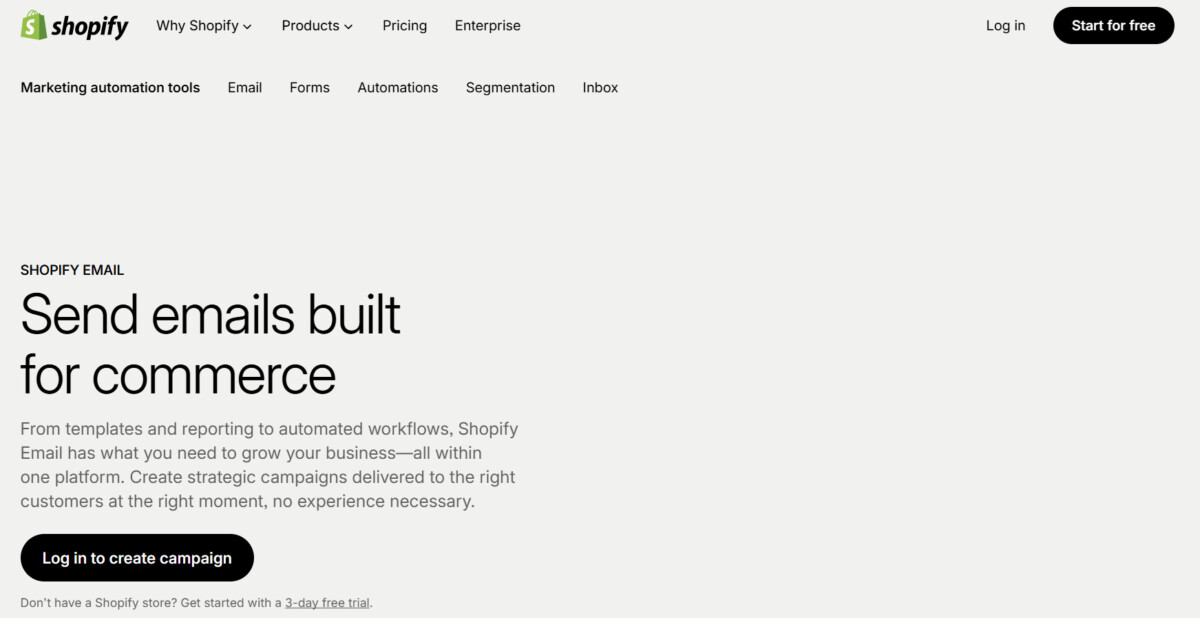
If you’re just starting out, Shopify Email offers a native solution that’s simple and affordable. Since it lives inside your Shopify admin, setup merely takes minutes.
Standout Features
You get basic drag-and-drop templates, product blocks that pull directly from your catalog, and support for discount codes.
Segmentation tools are entry-level, but they cover common needs. It’s easy to send clean, product-focused campaigns without needing a third-party app. It’s not flashy and lacks major features that standalone tools offer, but it works.
Pricing
There’s no subscription fee to start. You pay based on the number of emails sent after the free allotment runs out.
Best For
It’s best for new Shopify stores that need clean, basic email solutions with little learning curve.
MailerLite
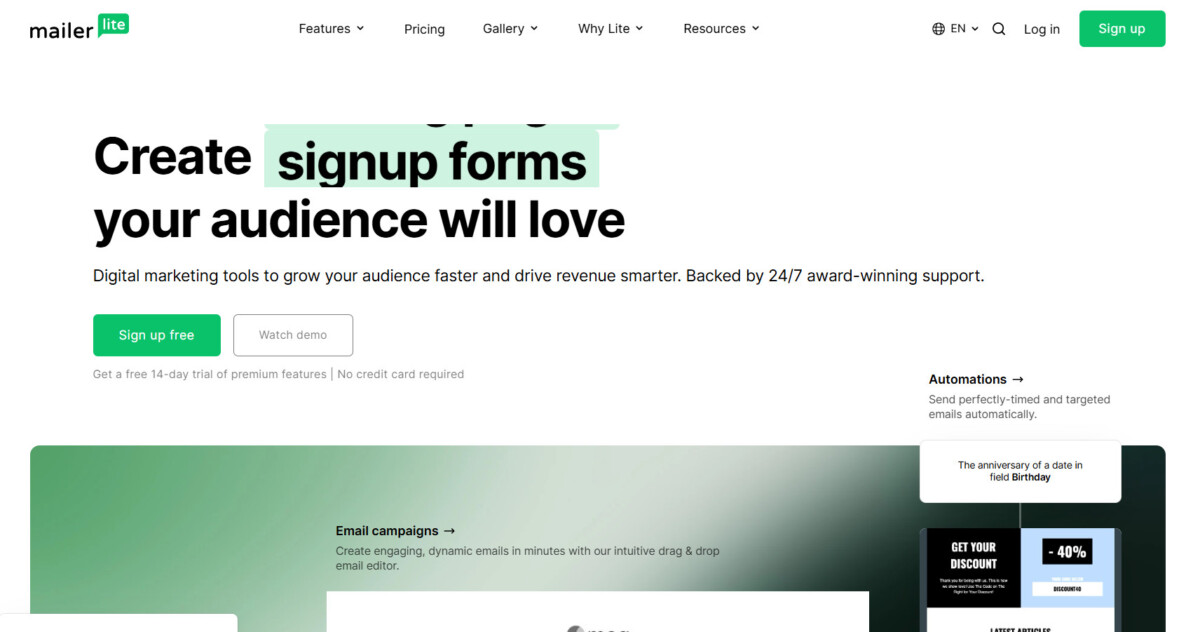
MailerLite offers a modern, lightweight email platform with a solid Shopify integration. It’s a great choice if you want clean emails, fast setup, and budget-friendly pricing.
Standout Features
Its drag-and-drop editor includes ecommerce content blocks like product highlights and discount callouts. Shopify-triggered flows like welcome emails, post-purchase messages, and win-back campaigns are simple to configure.
You can segment your list using purchase history and engagement, build basic A/B tests, and mock up landing pages or forms to grow your list.
Pricing
Pricing is tiered by contact size. The free tier includes core features but has some caps on automation and design options.
Best For
It’s best for newer or resource-constrained Shopify stores that want clean templates and essential automations.
Drip
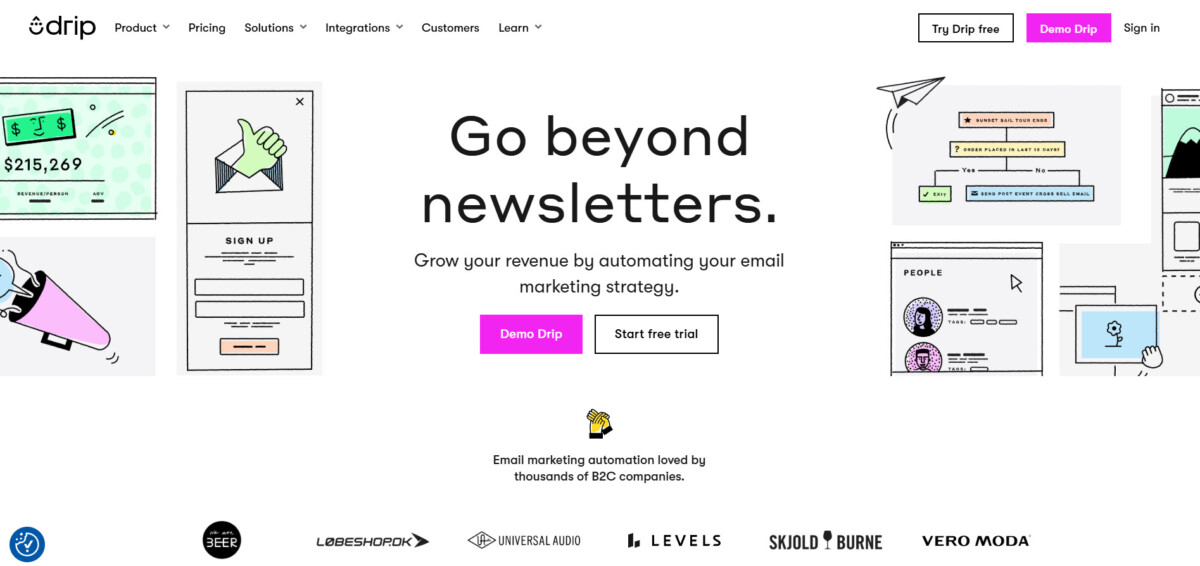
Drip is built for ecommerce brands that want complete control over their customer journey. Its visual automation builder is flexible and powerful.
Standout Features
You can build workflows that trigger based on Shopify data, like first-time purchases, repeat behavior, or product views. Product feeds let you recommend items dynamically.
You can segment using tags, order data, and engagement. Drip also includes built-in forms and pop-ups to grow your list.
Pricing
Pricing is based on how many contacts you have, and heavier email volumes may cost more.
Best For
It’s best for DTC stores that prioritize flexible automations over all-in-one suites.
ActiveCampaign
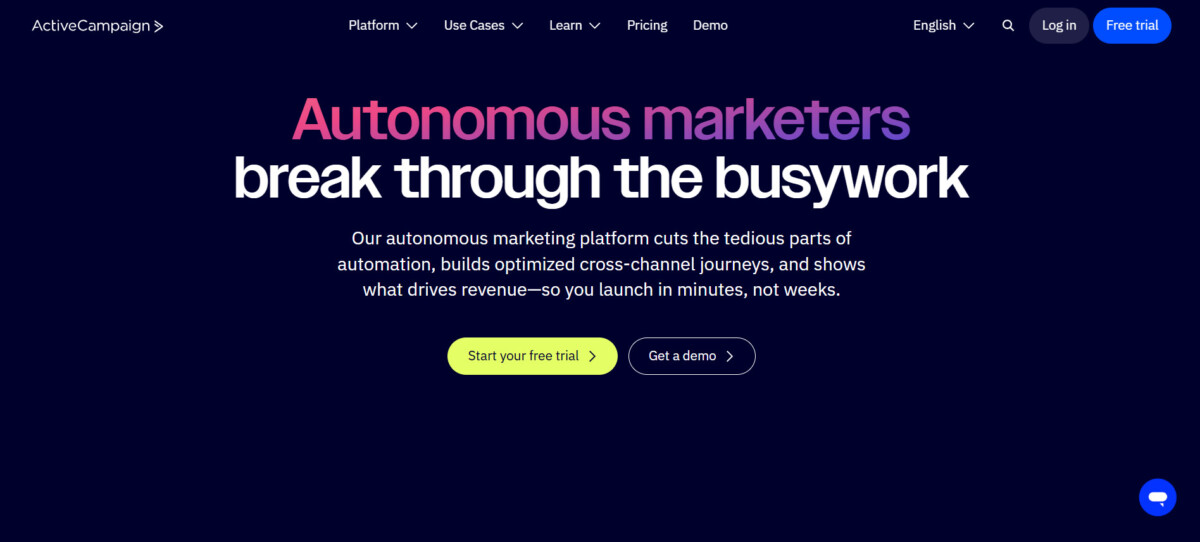
ActiveCampaign is a powerhouse with CRM features and flexible automation capabilities. Its Shopify integration adds valuable ecommerce signals to your workflows.
Standout Features
You can build visual automations with conditional logic, use site and behavior tracking, and personalize content using tags and purchase data. It’s one of the more advanced tools on this list.
You can also use its lightweight CRM to track sales activity and customer status.
Pricing
Plans scale based on both features and contact count. SMS and CRM features are available as add-ons.
Best For
It’s best for stores looking for tight alignment between marketing and customer management, especially if they need email and a CRM in one.
Implementation Tips for Faster Wins
- Start with high-ROI workflows. These include abandoned checkout, post-purchase cross-sells, 60-day winbacks, and a welcome series for new subscribers.
- Build key segments. Distinguish key vs repeat buyers, high spenders, those that have been inactive for 60-120 days, by category interest, and promo hunters vs full-price buyers.
- Run tests. Try subject lines, different send times, content layouts (product block vs editorials), incentives, and SMS nudges.
Above everything, remember to stay compliant. Use double opt-in, collect consent clearly (especially on checkout forms), and make sure unsubscribes are easy and they stay that way.
To sum up, finding the best email marketing apps for Shopify comes down to fit. Start small, use your store’s data smartly, and grow into more features as you go, not the other way around.




